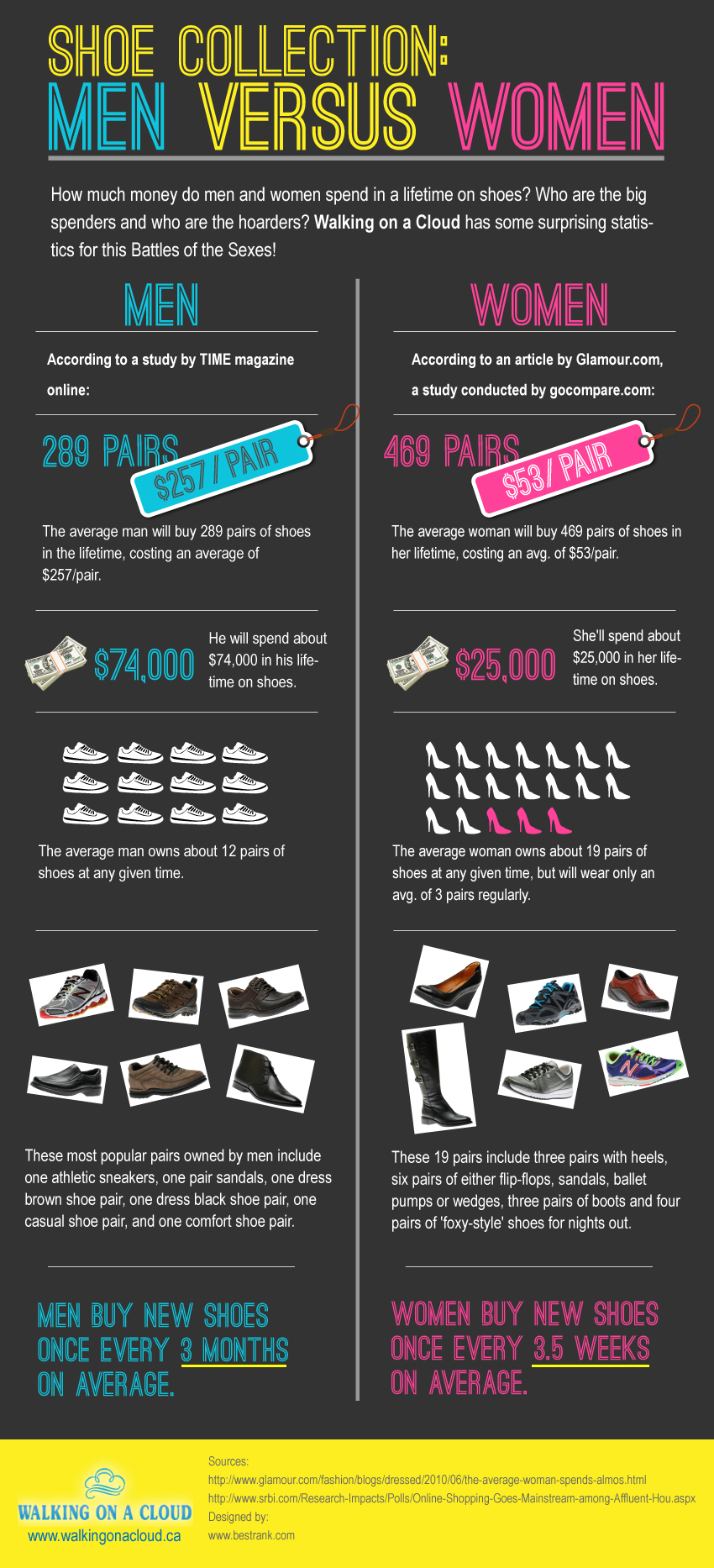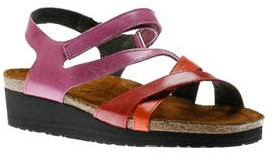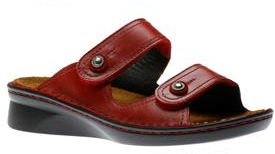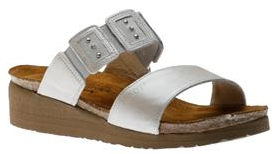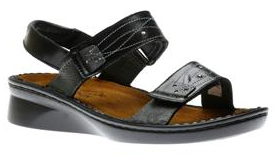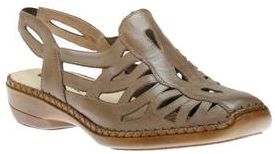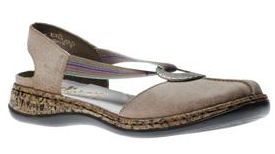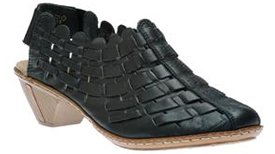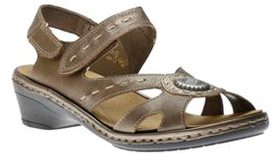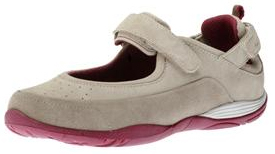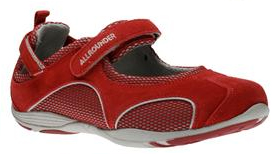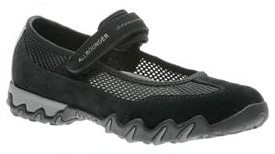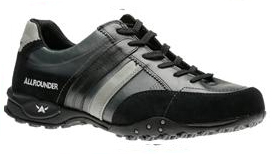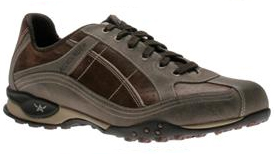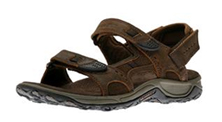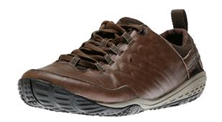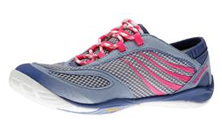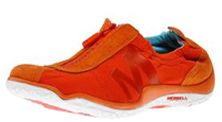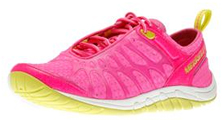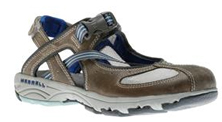With the nation’s growing obesity problem and the widely publicized  risks of living a sedentary lifestyle, there has been a greater push for us to increase our physical activity. Of the many workouts, sports, and exercises in the world, one of the easiest and most accessible activities is running. It’s easy as putting one foot in front of the other and pumping your arms.
risks of living a sedentary lifestyle, there has been a greater push for us to increase our physical activity. Of the many workouts, sports, and exercises in the world, one of the easiest and most accessible activities is running. It’s easy as putting one foot in front of the other and pumping your arms.
At the same time, running is pretty hard. Going for long distances and on inconstant terrain can get taxing, especially when you’re just starting out. It’s easy to want to give up—but hold that thought. If you want to add running to your lifestyle, there’s only one person in your way—you! With this article you’ll learn:
- The benefits of running for your body, brain, and emotions
- How to find the right running shoes
- Running apparel basics
- How to fuel your body with wholesome foods
- How to prevent injuries
- How to ease sore, tired runner’s feet
Keep reading to learn what you need to know to be a runner.
Physical, Mental, and Emotional Benefits
Why run when you could just as easily sit on your rump all day and spend so many hours crawling through your Netflix queue? As pleasant as that sounds, running comes with a ton of benefits for all facets of your life.
Your Body
Let’s start with the body. It might be easier to list off what running doesn’t do for your physical health because running offers so much. It reduces LDL cholesterol, the bad kind of cholesterol that swims in your blood and can form plaque that builds up in the walls of your arteries. This ultimately reduces the function and efficiency of your heart.
At the same time, intense physical activities like running boost HDL cholesterol—the good cholesterol. High levels of HDL cholesterol prevent heart attacks and remove the bad cholesterol from the body.
Running also exercises your lungs and the all-important muscle that is the heart, allowing for its improved function. That, in turn, reduces high blood pressure.
All of that—the lowered blood pressure and cholesterol—contributes to a reduced risk of heart disease, stroke and diabetes. Going for a run also boosts your natural immunities and can potentially fight off cancer. If that’s not enough, studies show that running can also prevent vision loss.
Your Mind
That’s all well and good, but what’s the point of having a healthy body if you don’t have the brains to back it up? Well, running can help out in that department as well. Your brain actually shrinks with age, leading to a host of problems. Running stimulates the growth of blood vessels and nerve cells, actually increasing the tissue volume in your noggin. Studies show that a quick run can also do wonders for your memory, concentration, and multi-tasking abilities.
Your Emotions
Being human is about more than smarts and physical health. Emotions play a large role in everything you do, and running ensures that you stay emotional healthy. Any kind of intense exercise promotes the release of the body’s natural feel-good chemicals, including:
- Endorphins, which are responsible for feelings of excitement, satisfaction, and euphoric highs.
- Serotonin, a neurotransmitter that regulates appetite, sleep, and mood.
- Norepinephrine, which increases motivation and focus.
These chemicals work in conjunction to boost your mood and reduce stress, making running an excellent treatment for depression and anxiety disorders. According to a study, these effects are multiplied when you change your running environment from urban areas to more natural environments.
Finding the Right Running Shoes
 Okay, you’re thoroughly convinced now that running is right for you, so it’s time to get the right gear to hit the trails. The great thing about running is that it doesn’t require much special equipment.
Okay, you’re thoroughly convinced now that running is right for you, so it’s time to get the right gear to hit the trails. The great thing about running is that it doesn’t require much special equipment.
The one thing you do need is a pair of shoes. We’re not talking flip-flops or your beat-up skate shoes. You need comfortable running shoes, such as the New Balance pictured, complete with sufficient cushioning to absorb the shock of your feet hitting the ground. The wrong shoes not only make running difficult, but also increase your risk of injury. You can also purchase inserts to provide additional cushioning.
Choosing the right pair of running shoes is more of a personal journey because your feet are unique. You have to take into account size, width, and arches on top of the amount you train and your running style. There is no single running shoe that will suit everyone’s particular needs. Many runners experiment with different shoe brands and models before settling on the one that works in fit, feel, function, and form.
To shorten the amount of trial and error, the best thing you can do is identify your foot type. There are three types of arches: low, neutral, and high.
- The neutral arch tends to be the ideal as it makes finding shoes that fit much easier. You also don’t have any structural issues in your legs, allowing for perfect balance and support.
- A low arch means the entire bottom of your foot pretty much touches the floor, hence why people with a low arch are said to have flat feet. This can lead to stability issues, mainly pronation, which essentially means you step more with the inside of your foot.
- With a high arch, it seems like the only parts of your feet touching the floor are your heel and your toes with plenty of space in your instep. High arches cause supination, wherein your steps tend to roll outward. If your shoes show more wear on the outside of the foot, you probably have high arches.
You can see how a shoe designed for a neutral arch would squish a flat foot or not provide enough of a curve for a high arch.
Above all, make sure you choose actual running shoes. Running shoes are built to withstand the impact of each step—impact that can get as high as 2.5 times your body weight on one foot. Running shoes also offer more:
- Flexibility
- Ventilation
- Stability
- Traction on all types of terrain
- Reflectivity at night
Cross-training, basketball, or other generic athletic shoes might work in the beginning, but you want shoes designed specifically for running as you get deeper into it. Think of it this way: you wouldn’t use a golf club to play baseball.
Tip: Opt for comfort shoes in your everyday wardrobe as well. Foot care happens all throughout the day, not just when you’re pounding the pavement. The last thing you want to do is increase your odds of foot injury due to unhealthy footwear like high heels, pointy-toed shoes, and other footwear types that don’t offer proper support and protection.
Avoiding the Perils of Apparel
In terms of apparel, you can wear just about anything that you’re comfortable working out in. However, for longer runs or potential races, you may want to change things up. Mainly, avoid cotton. Cotton tends to soak up moisture, which gets uncomfortable because it doesn’t get wicked away. Switch out the cotton for synthetic materials that wick the moisture away.
Technical fabrics, like polypropelene or Thinsulate, move the sweat away from the body and out into the air. They prevent chafing and keep you comfortable regardless of the weather.
Don’t forget your socks either. Moist socks cause blisters, sores, and make an excellent breeding ground for bacteria and fungi. Stick with polyester, acrylic, and other performance fabrics. For winter, you can wear wool, which is fantastic at wicking moisture while keeping you warm.
Women runners should invest in good sports bras. You won’t keep up with running if you’re not comfortable, so don’t skimp on a good sports bra that provides the support you need.
Eating to Run, Running to Eat
Your diet plays a big role in your running because, as it turns out, the things you put into your body have an effect on your overall activity levels. Fill your body with junk food and your body will act like a piece of junk.
The things you should include in your daily diet:
- Carbohydrates, particularly complex carbohydrates, are the best source of energy for anyone leading an active lifestyle. Complex carbs offer a steady stream of energy as opposed to the sudden bursts and dips of simple carbs.
- Protein offers some energy but has the more important task of building and healing muscle tissue.
- Fat tends to be reviled by the general public, but fat is necessary. Unsaturated fats, particularly foods that contain omega-3 fatty acids, are essential to disease prevention and various bodily functions.
- Calcium and vitamin D are essential to building strong bones and preventing osteoporosis—literally porous bones—and stress fractures.
Fortunately, there are a ton of delicious foods that provide these nutrients. Fill your grocery cart with:
- Almonds: Almonds and other nuts offer a ton of protein and something called gamma-tocopherol, a form of vitamin E shown to protect against forms of cancer. Almonds also lower cholesterol levels and decrease your risk for heart disease. Eat a handful of them a few times a week.
- Eggs: If you want protein, all you need to do is turn to eggs. Eggs offer the most complete food protein next to human breast milk. That means an egg has all the amino acids necessary to heal your weary leg muscles after a long run.
- Salmon: Aside from giving you plenty of lean, high-quality protein, salmon is filled with omega-3 fatty acids. Omega-3s are one of the good fats and help ease inflammation and improve heart health.
- Oranges: It’s common knowledge that oranges are crammed with vitamin C. While it is best known for fighting off the common cold and flu, vitamin C also happens to relieve muscle soreness.
- Whole grains: Whole grains are some of the best sources of fiber and complex carbohydrates. Try steel-cut oatmeal, quinoa, and even homemade popcorn.
- Dark chocolate: Just because you’re running doesn’t mean you have to do away with sweet treats. Dark chocolate is quite the indulgence because it tastes great and has a ton of health benefits. Mainly, the abundance of flavonols. Flavonols are antioxidants that ensure good heart health. Just remember to enjoy your dark chocolate in moderation.
Preventing Injuries
It’s not uncommon to get injured doing any physical activity, running included. Fortunately, you have the best shoes. That alone significantly reduces your chance of injury. Other ways to avoid serious injuries:
- Remember to warm up and cool down. Don’t take yourself from zero to 60 in a few seconds. Take ten to fifteen minutes to warm up your body and muscles before your run. After your run, perform a simple cool down to transition from your state of intense activity to relative inactivity. Warm up and cool down should consist of simple stretches and exercises to get your heart beating a little faster.
- Work in some strength training. Muscles, particularly those in your core, hips, and lower legs, keep your body balanced and stable for even, symmetrical running.
- Progress gradually. You won’t go from running a mile to running marathon distances in one week. Building your stamina is a gradual process. Putting your body through too much strain too soon is a perfect recipe for injury. You should increase your mileage no more than 5 to 10 percent each week, so if you run five miles one week, you can run 5.5 miles the next week.
- Shorten your stride. It’s not something that comes up enough, but shortening your stride as little as 10 percent can reduce your risk of injury and boost your overall running efficiency. Shorter strides lower the impact force on your feet.
- Rest. Your body needs rest to heal and recover. Rest, and rest often.
Give Your Feet Some Love
Even with your best injury prevention efforts, you’re still bound to experience at least a little soreness after a run. The best way to ease your tired feet is a little pampering. Soak your feet in a hot bath of peppermint tea or your favorite essential oils. This increases the blood flow to your feet, allowing for speedy recovery and less pain. You can also take the alternate approach and ice your feet. Ice prevents swelling and eases inflammation.
 Massage can also work out the kinks in your feet, improve circulation, and relax your body. Not many of us have friends or family members who will willingly rub our feet, but no worries! Giving yourself a massage is as easy as getting a ball. Find a tennis ball and place it under your foot. Roll it along the arch, applying pressure to the places that need it.
Massage can also work out the kinks in your feet, improve circulation, and relax your body. Not many of us have friends or family members who will willingly rub our feet, but no worries! Giving yourself a massage is as easy as getting a ball. Find a tennis ball and place it under your foot. Roll it along the arch, applying pressure to the places that need it.
Foot stretches and exercises are also a big relief to aches and can help your foot’s flexibility. Exercising your foot is as easy as trying to pick up pencils, socks, towels, and other items using just your toes. Stretch out your plantar fascia—the band of muscle running along the bottom of your foot—by standing on a step with your heels off the edge. Slowly lower your heels and hold for fifteen seconds before rising back up. Repeat as necessary.
Running is a thrilling activity and a great way to get your body moving. You can use your runs as a starting off point for other sports or enjoy it on its own. Maybe you’re inspired enough to tackle a marathon or triathlon. Above all, running just makes you feel great inside and out, so lace up your sneakers and hit the pavement. Good luck, and have fun!
Sources:
–http://sports.yahoo.com/news/running-2012-top-10-health-benefits-running-183200080–spt.html
–http://www.womenshealthmag.com/fitness/health-benefits-of-running
– http://www.heart.org/HEARTORG/Conditions/Cholesterol/AboutCholesterol/Good-vs-Bad-Cholesterol_UCM_305561_Article.jsp#
–http://www.fitbie.com/get-fitter/5-brain-benefits-running
–http://www.runnersworld.com/health/5-ways-running-boosts-brain-power
–http://running.about.com/od/shoesapparelandgear/tp/7-Running-Essentials.htm
–http://www.active.com/running/articles/running-gear-for-beginners-the-essential-helpful-and-fun
–http://www.active.com/running/articles/running-shoe-guide-for-dummies
– http://running.about.com/od/nutritionandhydration/a/runnersdiet.htm
–http://www.runnersworld.com/nutrition-runners/best-foods-runners
–http://www.active.com/running/articles/9-running-injury-prevention-tips
– http://www.runnersworld.com/health/the-10-laws-of-injury-prevention?page=single
– http://www.fitsugar.com/Tips-Ease-Sore-Runner-Feet-Prevent-Injury-22125091
– http://www.readersdigest.ca/health/home-remedies/6-ways-soothe-foot-pain
Images
– “Marathon” by Stijlfoto is licensed under CC BY 2.0
– Nike New Balance from http://www.walkingonacloud.ca
– “Jogging” by Rodolphe Breard is licensed under CC BY 2.0








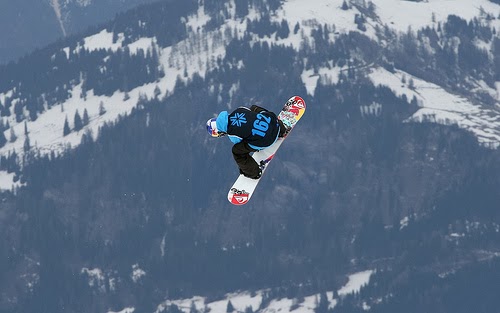
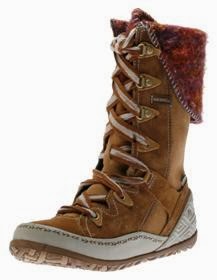



 Your feet have a big job to do. They bear all the weight and pressure of your body and carry
Your feet have a big job to do. They bear all the weight and pressure of your body and carry
 your other hand to stretch each toe forward and backward. Hold each stretch for a few seconds.
your other hand to stretch each toe forward and backward. Hold each stretch for a few seconds. risks of living a sedentary lifestyle, there has been a greater push for us to increase our physical activity. Of the many workouts, sports, and exercises in the world, one of the easiest and most accessible activities is running. It’s easy as putting one foot in front of the other and pumping your arms.
risks of living a sedentary lifestyle, there has been a greater push for us to increase our physical activity. Of the many workouts, sports, and exercises in the world, one of the easiest and most accessible activities is running. It’s easy as putting one foot in front of the other and pumping your arms. Okay, you’re thoroughly convinced now that running is right for you, so it’s time to get the right gear to hit the trails. The great thing about running is that it doesn’t require much special equipment.
Okay, you’re thoroughly convinced now that running is right for you, so it’s time to get the right gear to hit the trails. The great thing about running is that it doesn’t require much special equipment. Massage can also work out the kinks in your feet, improve circulation, and relax your body. Not many of us have friends or family members who will willingly rub our feet, but no worries! Giving yourself a massage is as easy as getting a ball. Find a tennis ball and place it under your foot. Roll it along the arch, applying pressure to the places that need it.
Massage can also work out the kinks in your feet, improve circulation, and relax your body. Not many of us have friends or family members who will willingly rub our feet, but no worries! Giving yourself a massage is as easy as getting a ball. Find a tennis ball and place it under your foot. Roll it along the arch, applying pressure to the places that need it.
